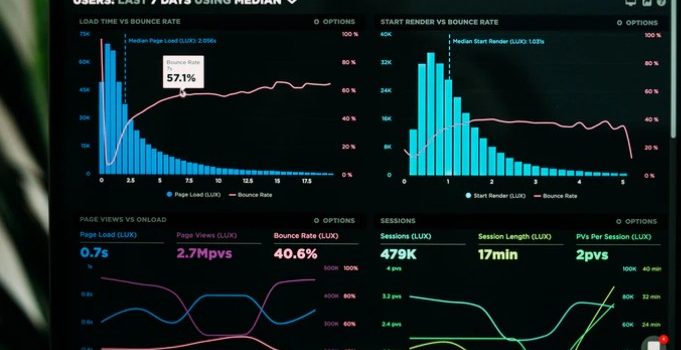

This article is an excerpt from the Shortform book guide to "The Most Important Thing" by The Princeton Language Institute and Abby Marks Beale. Shortform has the world's best summaries and analyses of books you should be reading.
Like this article? Sign up for a free trial here.
Is there any way to avoid risk when investing? How can you minimize the risk from your investments?
In The Most Important Thing, Howard Marks contends that risk is an unavoidable aspect of investing. However, he does have recommendations for controlling risk by practicing defensive investing.
Let’s look at Marks’s conception of risk and how to mitigate it while investing.
Marks’s View of Risk vs. the Academic View of Risk
Before understanding how you can minimize the risk from your investments, you need to know what investing risk is. According to Marks, any approach to investing requires an understanding of risk. He defines risk as the probability that you’ll lose money because that is investors’ greatest concern.
To see the novelty of Marks’s definition, it helps to understand the main alternative that he rejects—namely, the standard academic view that equates risk with portfolio volatility, the extent to which the portfolio experiences swings in value. As Marks relates, this view is based on the assumption that more volatile investments are less reliable, increasing risk for investors.
In Marks’s evaluation, this academic view misses the mark. Specifically, he suggests that investors aren’t concerned with portfolio fluctuations per se because fluctuations alone don’t always cost investors money in the long run. On the contrary, a security’s price might fluctuate wildly, but as long as its price follows an upward trend over time, it can yield large returns. For this reason, Marks clarifies that the real risk of investing is the possibility of permanent loss—based on his own investing experience, he argues that this prospect most worries investors.
The upshot is that risk can’t be objectively measured, and only investors with careful qualitative analysis can discern the risk associated with a given security. In particular, Marks argues that investors must ascertain how stable a security’s intrinsic value is, along with the nature of the connection between this value and the security’s market price. After all, these are the two factors that determine the likelihood of loss: If a security’s value dips, or the market fails to accurately reflect this value, investors will lose money.
Control Risk Through Defensive Investing
Though he discourages high-risk investments, Marks recognizes that eliminating risk altogether—for example, by purchasing 10-year government bonds that return around 4% annually—will yield unsatisfying returns. He argues that, to balance this inverse relationship between risk and return, you should practice defensive investing, which uses a margin of safety to reap reliable returns while minimizing risk.
As Marks relates, the margin of safety refers to the difference between a security’s intrinsic value and its market price when purchased. For example, imagine that you purchased Tesla stock at $118.47 at the beginning of 2023, and its intrinsic value was $150 per share. Then, your margin of safety would be about $32 per share.
(Shortform note: Graham, who first introduced the concept of margin of safety in The Intelligent Investor, argued that one crucial way to increase your margin of safety is through diversification (purchasing more securities of different types). He reasoned that, even with a margin of safety, investing in only one security leaves you exposed to loss if that security drops significantly. For instance, even with a $32 per share margin of safety when purchasing Tesla stock, a large drop in Tesla’s intrinsic value could leave you exposed to a loss if that was your only investment. By contrast, with a diverse portfolio, you’ll still be able to earn a profit even if some of your securities drop in value.)
According to Marks, investing based on the margin of safety has two key benefits. First, as we discussed earlier, securities purchased below their intrinsic value are likely to increase in price because market price typically reflects intrinsic value over the long term. Second, the margin of safety protects investors from loss if the intrinsic value of a security decreases. Returning to the previous example, even if Tesla’s intrinsic value dropped to $120 per share, it’s unlikely that you’d lose money since you purchased at $118.47 per share.
(Shortform note: Although investing with a margin of safety has these benefits, experts point out that it also suffers drawbacks. In particular, establishing a margin of safety requires accurately determining a security’s intrinsic value—a practice which, experts warn, rarely lends itself to a precise answer. For example, Buffett’s method of calculating intrinsic value requires estimating a company’s future net income, which is an inherently subjective estimate. For this reason, investors can easily think they’ve established a margin of safety because of a faulty intrinsic value calculation, leaving them overconfident.)

———End of Preview———
Like what you just read? Read the rest of the world's best book summary and analysis of The Princeton Language Institute and Abby Marks Beale's "The Most Important Thing" at Shortform.
Here's what you'll find in our full The Most Important Thing summary:
- Why the best approach to investing is value investing
- The common mistakes that expose investors to risks
- How market cycles work and how to use them to find mispriced securities






